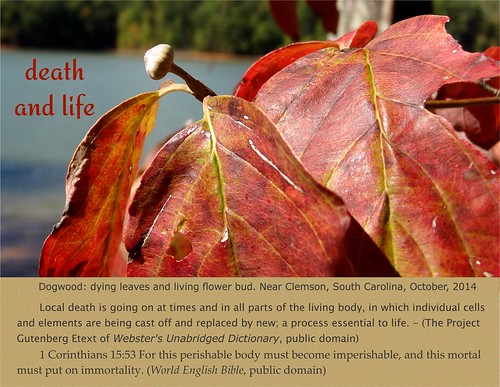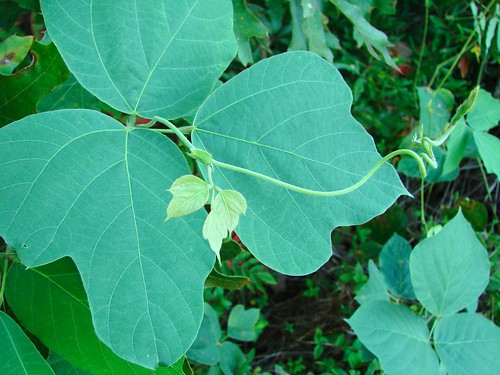I confess--I have taught botany a few times. No doubt it is showing.
I have no idea how many leaves there are in the world, but there must be trillions, at least. Don't forget, grass blades are leaves.
Leaves are UniformMost leaves have, as their main function,
photosynthesis, trapping light and turning the energy into chemical energy stored as food. Since light can't travel very far in a leaf, leaves aren't very thick--the under parts of thick leaves would be useless in photosynthesis if they were.
Photosynthesis requires, in addition to light, various enzymes and pigments. It also requires two common raw materials, namely Carbon Dioxide and water. Almost all leaves need a reliable supply of water, carried up from the roots. The roots, and other non-green parts, require food. They get it carried down from the leaves. The carrying apparatus has sturdy cells, which withstand water pressure. These groups of sturdy cells make up the veins of leaves. The transportation apparatus also serves to hold the leaf relatively flat, and spread it out, which means that it can absorb more sunlight.
Leaves are uniform in the sense that most of them are thin green objects with thickened veins. That's probably the best way leaves could be.
Leaves are Diverse
I don't have to tell you that. Different species of plants have different shapes of leaves. Leaves are different shapes on the same plant, depending on how old they are, and a lot of other things, some, no doubt, chance. Leaves are different colors, even on the same plant. They are also different sizes.
I can't prove it, of course, but I suspect that there have never been two exactly identical leaves in the history of the world. (See
here for a discussion of this subject, on snowflakes.)
Leaves are both uniform and diverse.God loves both uniformity and diversity.
Some of the evidence for uniformity has to do with living things. Genesis 1, in the KJV, uses "after his kind," repeatedly. Now, we don't really know what correspondence, if any, there is between that phrase and scientific terms such as species and genus. But I think it is reasonable to assume that oaks and, say, daisies, are not the same kind. They don't have the same leaves. But oak leaves, at least those of the same species, have considerable uniformity. With experience, we can match most fallen leaves to their source. The leaves of one kind of plant are alike. There is uniformity there.
Some of the evidence has to do with God's people. They were uniform, as well, in intention and action, at least some times. Exodus 24:3 says that the congregation agreed unanimously to keep the covenant. (They didn't, of course) Acts 2:1 and 2:46 say that the early church was united in spirit.
God loves diversityThe Psalmist, in 104:24-25, wrote
O LORD, how manifold are thy works! in wisdom hast thou made them all: the earth is full of thy riches.
[So is] this great and wide sea, wherein [are] things creeping innumerable, both small and great beasts.We don't know how many species there are. It is likely that most of them are unclassified. Informed estimates range as high as 30 million. Apparently many species used to exist, but are extinct.God loves diversity in the church. Apparently the early church had diversity of gifts, of temperaments, and of ethnic extraction. It still should. We must also be uniform in our acknowledgement of Jesus as Lord.






